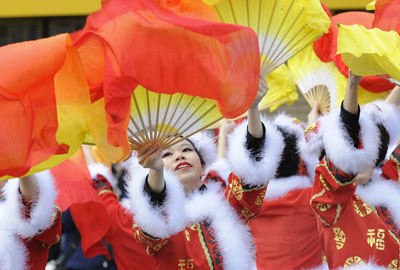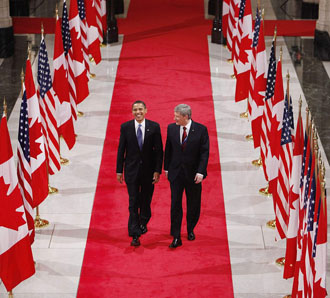List
30 Canadian Immigration Cohorts
To celebrate its 30th anniversary, The Canadian Encyclopedia created 30 lists of 30 things, from famous people and historic events, to iconic foods and influential artists.

Enter your search term
Signing up enhances your TCE experience with the ability to save items to your personal reading list, and access the interactive map.
Create AccountList
To celebrate its 30th anniversary, The Canadian Encyclopedia created 30 lists of 30 things, from famous people and historic events, to iconic foods and influential artists.
"https://d3d0lqu00lnqvz.cloudfront.net/media/media/a7c708ef-3e7b-4890-a1ad-f637397985a6.jpg" // resources/views/front/categories/view.blade.phphttps://d3d0lqu00lnqvz.cloudfront.net/media/media/a7c708ef-3e7b-4890-a1ad-f637397985a6.jpg

Article
Alberta Culture and Multiculturalism (Alberta Culture until 1987). Department established in 1975 by the government of the province of Alberta.
"https://www.thecanadianencyclopedia.ca/images/tce_placeholder.jpg?v=e9dca980c9bdb3aa11e832e7ea94f5d9" // resources/views/front/categories/view.blade.phphttps://www.thecanadianencyclopedia.ca/images/tce_placeholder.jpg?v=e9dca980c9bdb3aa11e832e7ea94f5d9

Article
The Black Cross Nurses (BCN) is an auxiliary group intended for female members of the Universal Negro Improvement Association (UNIA). The BCN was modeled on the nurses of the Red Cross. Its first chapter was launched in Philadelphia in May 1920. Under the leadership of Henrietta Vinton Davis, the BCN quickly became one of the UNIA’s most popular and iconic auxiliary groups. Offering a safe and inviting place for the Black community, UNIA halls became important cultural hubs in many cities and towns across Canada, where BCN divisions were also established. Although they were not professionally trained nurses, members of the BCN were expected to provide care and advice on matters of health and hygiene.
"https://d3d0lqu00lnqvz.cloudfront.net/media/new_article_images/BlackCrossNurses/Black Red Cross march, Harlem , 1924 by James Van der Zee.jpg" // resources/views/front/categories/view.blade.phphttps://d3d0lqu00lnqvz.cloudfront.net/media/new_article_images/BlackCrossNurses/Black Red Cross march, Harlem , 1924 by James Van der Zee.jpg

Collection
"Have we read our own authors such as Dionne Brand, Afua Cooper and George Elliott Clarke? Do we know that the story of African-Canadians spans four hundred years, and includes slavery, abolition, pioneering, urban growth, segregation, the civil rights movement and a long engagement in civic life?" — Lawrence Hill
"https://d3d0lqu00lnqvz.cloudfront.net/media/media/a7755b40-bb18-444f-92ba-f85d7ff7fb17.jpg" // resources/views/front/categories/view.blade.phphttps://d3d0lqu00lnqvz.cloudfront.net/media/media/a7755b40-bb18-444f-92ba-f85d7ff7fb17.jpg

Article
Bollywood, a playful word derived from Hollywood and the city of Bombay, refers specifically to the Hindi-language films produced in Mumbai (formerly Bombay), India, the city known as the heart of the South Asian film industry.
"https://www.thecanadianencyclopedia.ca/images/tce_placeholder.jpg?v=e9dca980c9bdb3aa11e832e7ea94f5d9" // resources/views/front/categories/view.blade.phphttps://www.thecanadianencyclopedia.ca/images/tce_placeholder.jpg?v=e9dca980c9bdb3aa11e832e7ea94f5d9

Article
Migration is a unique experience for a child and Canada receives child migrants from all over the world. Some children come as unaccompanied minors and claim refugee status, some come alone and wait to be reunited with their families, while others are international adoptees by Canadian families.
"https://d3d0lqu00lnqvz.cloudfront.net/media/media/55e0c503-e9cf-4fb3-852d-7776eb9d9871.jpg" // resources/views/front/categories/view.blade.phphttps://d3d0lqu00lnqvz.cloudfront.net/media/media/55e0c503-e9cf-4fb3-852d-7776eb9d9871.jpg

Article
Chinese Canadians are one of the largest ethnic groups in the country. In the 2021 census, more than 1.7 million people reported being of Chinese origin. Despite their importance to the Canadian economy, including the construction of the Canadian Pacific Railway (CPR), many European Canadians were historically hostile to Chinese immigration. A prohibitive head tax restricted Chinese immigration to Canada from 1885 to 1923. From 1923 to 1947, the Chinese were excluded altogether from immigrating to Canada. (See Chinese Immigration Act.) Since 1900, Chinese Canadians have settled primarily in urban areas, particularly in Vancouver and Toronto. They have contributed to every aspect of Canadian society, from literature to sports, politics to civil rights, film to music, business to philanthropy, and education to religion. This is the full-length entry about Chinese Canadians. For a plain-language summary, please see Chinese Canadians (Plain-Language Summary).
"https://d3d0lqu00lnqvz.cloudfront.net/media/media/bff27f89-2e99-43af-a42e-36f38dbcdf8d.jpg" // resources/views/front/categories/view.blade.phphttps://d3d0lqu00lnqvz.cloudfront.net/media/media/bff27f89-2e99-43af-a42e-36f38dbcdf8d.jpg

Article
The Lunar New Year — also known as the Spring Festival, Chinese New Year, Tet for Vietnamese Canadians, or Solnal for Korean Canadians — is celebrated in Canada and several other countries. It is one of the largest celebrations for Canada’s Chinese population, it is also celebrated by Canadians from Vietnam, Korea and Southeast Asia. Although it is not a statutory holiday in Canada, many Asian Canadian businesses are closed or have reduced hours for the occasion. Since 1 June 2016, this celebration has been recognized as an official holiday in Canada.
"https://d3d0lqu00lnqvz.cloudfront.net/media/media/e1474526-547c-47b7-90e4-afda069c28bf.jpg" // resources/views/front/categories/view.blade.phphttps://d3d0lqu00lnqvz.cloudfront.net/media/media/e1474526-547c-47b7-90e4-afda069c28bf.jpg

Article
Doukhobors are a sect of Russian dissenters, many of whom now live in western Canada. They are known for a radical pacifism which brought them notoriety during the 20th century. Today, their descendants in Canada number approximately 30,000, with one third still active in their culture.
"https://d3d0lqu00lnqvz.cloudfront.net/DCI-images/1908-Doukhobours-final-rescale.jpg" // resources/views/front/categories/view.blade.phphttps://d3d0lqu00lnqvz.cloudfront.net/DCI-images/1908-Doukhobours-final-rescale.jpg

Article
From the earliest years of the 17th century, the Dutch were engaged in the fur trade on the Hudson River. In 1614, they established trading posts on Manhattan Island and at Fort Orange (present-day Albany, New York). But only after the American Revolution (1775-1783) did Dutch immigration to British North America (now Canada) begin. The Dutch who had long been settled in the Thirteen Colonies fit easily into Canadian society. Since that time, Canada has experienced three waves of immigration from the Netherlands, the largest of them after the Second World War.
"https://d3d0lqu00lnqvz.cloudfront.net/media/media/36937a2a-48f7-4146-a170-649f7f3daaab.jpg" // resources/views/front/categories/view.blade.phphttps://d3d0lqu00lnqvz.cloudfront.net/media/media/36937a2a-48f7-4146-a170-649f7f3daaab.jpg

Article
Emigration refers to the act of leaving one's region or country of origin to settle in another. This is unlike immigration which is the action of arriving in a country.
"https://www.thecanadianencyclopedia.ca/images/tce_placeholder.jpg?v=e9dca980c9bdb3aa11e832e7ea94f5d9" // resources/views/front/categories/view.blade.phphttps://www.thecanadianencyclopedia.ca/images/tce_placeholder.jpg?v=e9dca980c9bdb3aa11e832e7ea94f5d9

Article
The English were among the first Europeans to reach Canadian shores. Alongside the French, they were one of two groups who negotiated Confederation. The expression "English Canadians" refers to both immigrants from England and the Loyalists in exile after the American Revolution and their descendants. According to the 2016 Census of Canada, about 18 per cent of the Canadians consider themselves to be of English origin.
"https://d3d0lqu00lnqvz.cloudfront.net/media/media/99b475a0-4821-4f9d-89e1-dff3464ef8e9.jpg" // resources/views/front/categories/view.blade.phphttps://d3d0lqu00lnqvz.cloudfront.net/media/media/99b475a0-4821-4f9d-89e1-dff3464ef8e9.jpg

Article
According to the 2016 census, more Canadians are reporting a mother tongue or language spoken at home other than English or French than in previous years. This is mostly due to the increase in immigrant languages. According to Statistics Canada, immigrant languages are languages “whose presence is initially due to immigration after English and French colonization.”
"https://www.thecanadianencyclopedia.ca/images/tce_placeholder.jpg?v=e9dca980c9bdb3aa11e832e7ea94f5d9" // resources/views/front/categories/view.blade.phphttps://www.thecanadianencyclopedia.ca/images/tce_placeholder.jpg?v=e9dca980c9bdb3aa11e832e7ea94f5d9

Article
Throughout its history, Canada has taken a series of steps to develop from a British colony into an independent nation. Both the First and Second World War were turning points; Canada’s military sacrifices gave it the strength and confidence to demand its own voice on the world stage. In the postwar era, Canada maintained its role in both Western and global alliances. (See NATO; NORAD; GATT.) However, economics have shaped Canadian diplomacy to a remarkable extent. Because of the United States’ singular importance to Canadian security and trade, relations with the US have dominated Canada’s foreign policy since Confederation.
"https://d3d0lqu00lnqvz.cloudfront.net/media/media/9da06892-ef18-4652-b682-3bb385411454.jpg" // resources/views/front/categories/view.blade.phphttps://d3d0lqu00lnqvz.cloudfront.net/media/media/9da06892-ef18-4652-b682-3bb385411454.jpg

Article
After New France was ceded to Great Britain in 1763, the migration of French colonists slowed considerably. A trickle of clergy members, farmers and professionals settled during the 19th century. However, after the Second World War, French immigration — which was then politically favoured — resumed with renewed vigour. This effort was geared towards recruiting francophone professionals and entrepreneurs, who settled in Canada’s big cities. The French spawned many cultural associations and had a large presence in French-Canadian schools.
"https://d3d0lqu00lnqvz.cloudfront.net/media/media/d698c031-e790-4c17-906a-5b880e71e24d.jpg" // resources/views/front/categories/view.blade.phphttps://d3d0lqu00lnqvz.cloudfront.net/media/media/d698c031-e790-4c17-906a-5b880e71e24d.jpg
